The Philippine island of Bohol is recovering from a double whammy - a 7.2 earthquake in October and then Typhoon Hainan 3 weeks later, but now they're keen to welcome tourists.
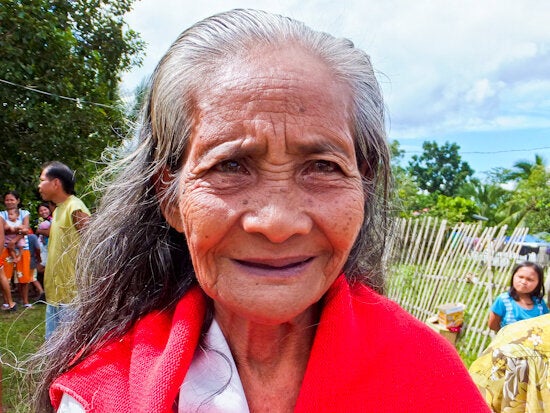
I'm still worried that my house will slip into the sea...
I'm standing at the epicentre of the quake in the centre of the island of Bohol, the 10th largest island in the Philippines. A huge fissure, metres deep, splits the landscape, next to a small village.
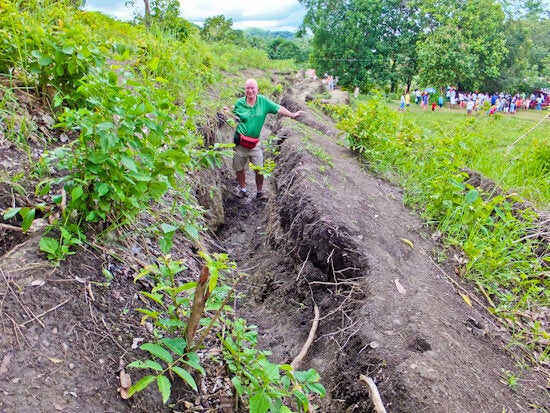
My informant is a 77 year old woman who was in her kitchen when the ground started to move. She'd never been in an earthquake before, or seen a disaster movie, so she rushed outside to ask people what was happening. They told her it was an earthquake and she watched her stone kitchen collapse and fortunately she was unharmed.
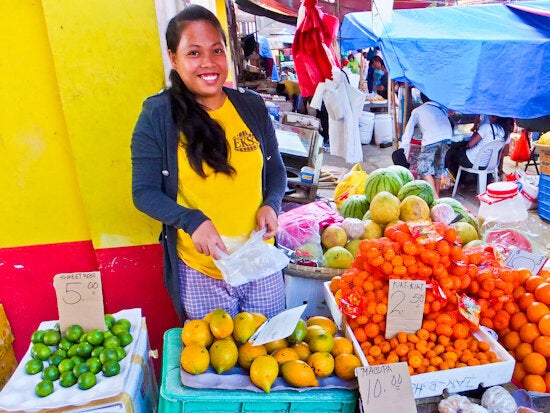
It's Sunday and local people have arrived to distribute essential foodstuffs and gape at this deep gash in the landscape. Fortunately this part of the island didn't bear the brunt of Typhoon Hainan which came along a few weeks later - that was in the North East where many are still homeless. The rain and wind did hamper the rescue effort but most roads and bridges have now been repaired.
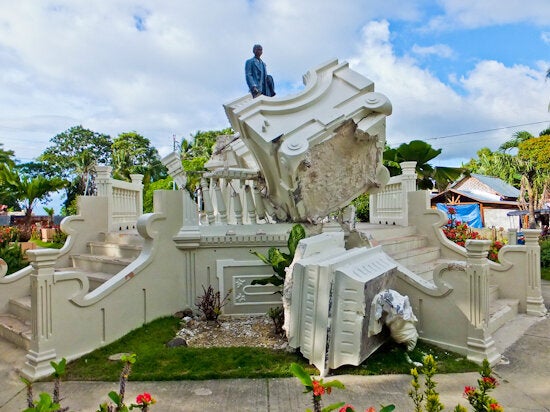
The churches are another matter - some of these beautiful colonial treasures have been reduced to piles of rubble, others have huge gaping holes and are presently unsafe. Services are held in huge marquees next to the ruins and many still live in tents, pitched in the gardens of their damaged houses.

It all sounds dreadfully sad, but the resilient locals tell me they need tourists to provide much needed income. Indeed it's almost business as usual in Loboc, as I set out on a river cruise in the shadow of the damaged centuries-old Jesuit church.
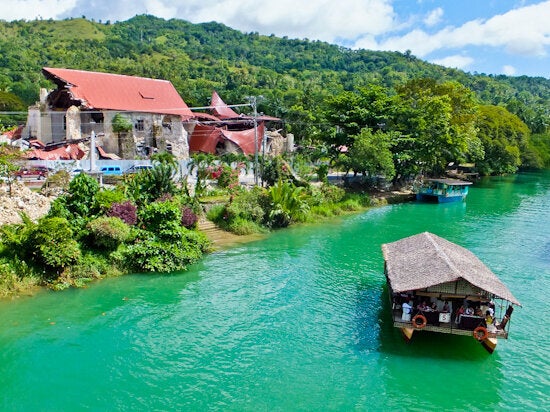
I help myself to the lavish Filipino buffet to the background of a couple of musicians recreating golden oldies, a sort of karaoke Eastern and Western. Fortunately we stop by a floating pontoon where village kids put on a show - they sing and dance, backed by a banjolina orchestra and it's absolutely charming.
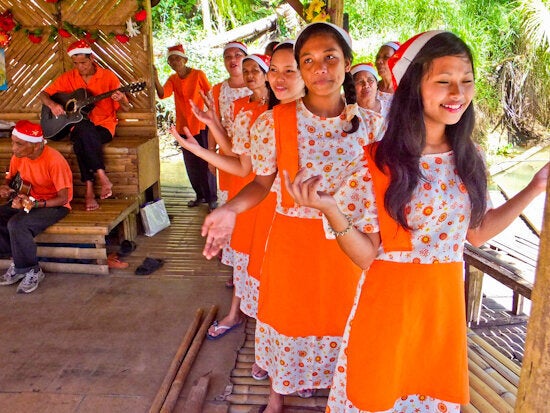
People also come here to visit the Tarsier sanctuary in the nearby town of Corella. This tiny endangered nocturnal primate has never been successfully bred in captivity but they are restoring populations here in a patch of secondary forest. As you wander round you can spot them clinging to branches and they're a bit like a bush babies with remarkably large eyes, each one the same size and weight as its brain. It's all part of a project to bring eco-tourism to Bohol.
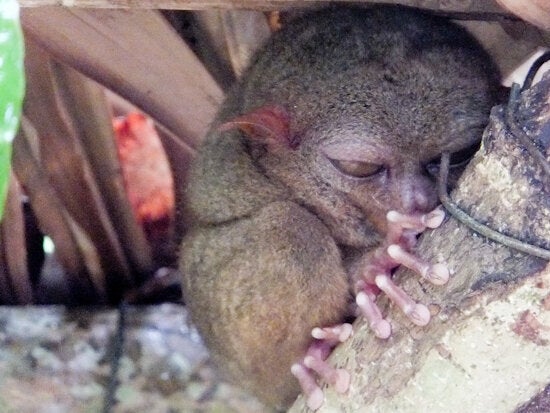
The most popular attraction round here are the Chocolate Hills, a group of over 1,200 dome shaped limestone protuberances that turn brown at the peak of summer. Apparently they reminded Americans of Hershey's Drops so that's how they got their name.
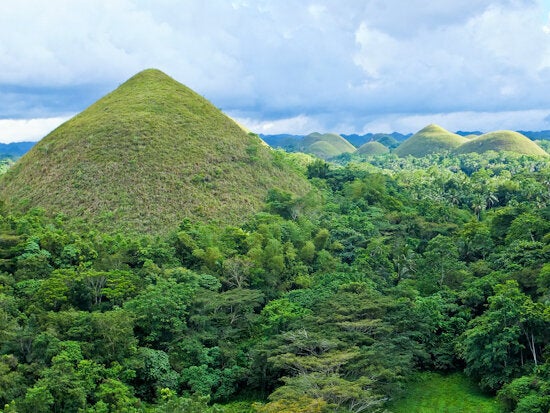
The quake split some of them in half and you can still see landslips scarring their sides. It also damaged the visitor complex near the village of Carmen and part of the elevated viewing platform is still off limits. In January they're green, rather than brown, and, according to the plaque were once coral reefs that erupted from the sea in a massive geologic shift.
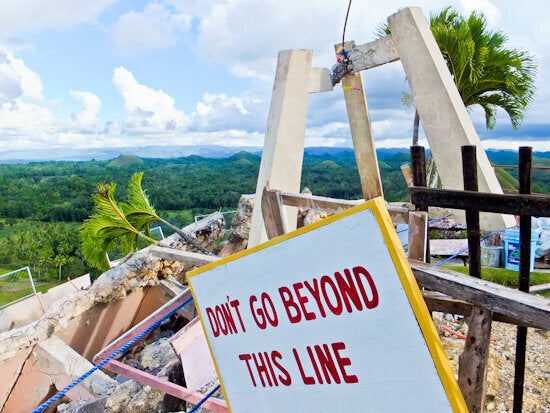
I'm staying on the island of Panglao, in the South of Bohol, joined by a causeway to the mainland. It seems to have escaped most of the quake and typhoon damage and is set to be a tourist hub with a new international airport planned. Alona Beach is the main resort, named after the 80's film star Alona Allegre, a favourite of President Marcos, after she appeared scantily clad in a movie here. These days it's crammed with hotels and restaurants and the Bellevue Resort is a quieter and a better bet. The food is also excellent and teh chef's special is rice cooked inside a whole coconut.

Whale and dolphin trips are on offer and there's also good diving round the coral reefs. At the moment Panglao is one of those relatively unspoilt tropical paradises and it makes a good base to visit the rest of Bohol. They're keen to welcome tourists and every tourist dollar goes some way to returning the island to a level of normality. I would get there before the crowds and do your bit to aid the recovery.
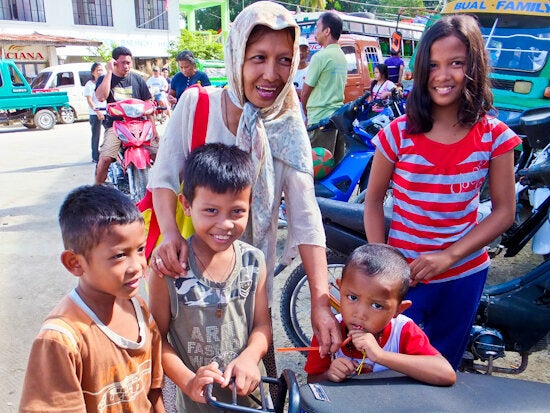
Bohol has information about the island.
It's More Fun in the Philippines has information about the country.
Cathy Pacific flies daily from London to Manila, via Hong Kong. Alternatively you can fly to Cebu and take the ferry.
Philippine Airlines flies from Manila to Tagbilaran, Bohol, three times daily.
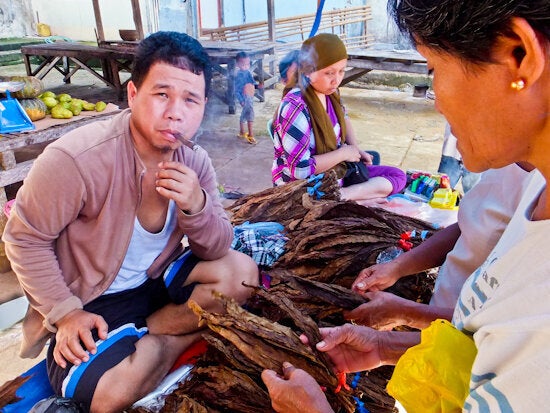
All pictures copyright Rupert Parker.
-